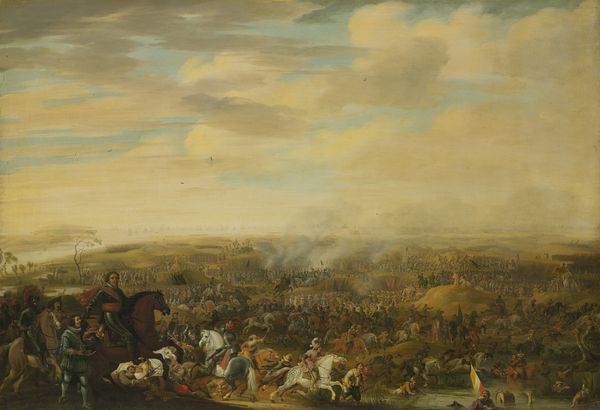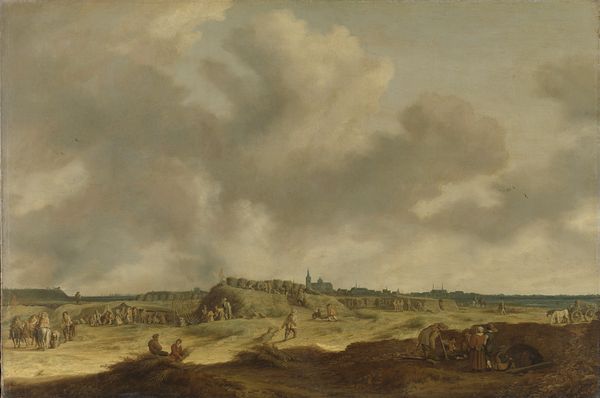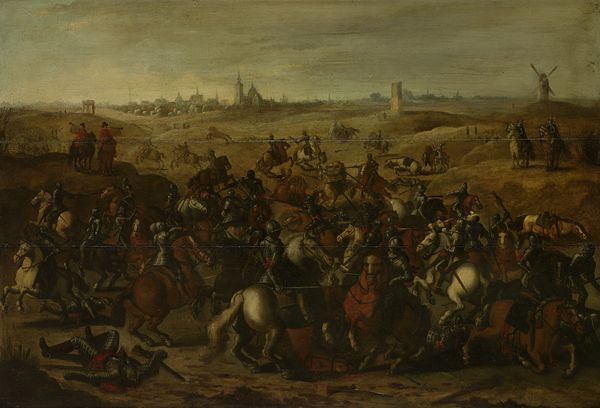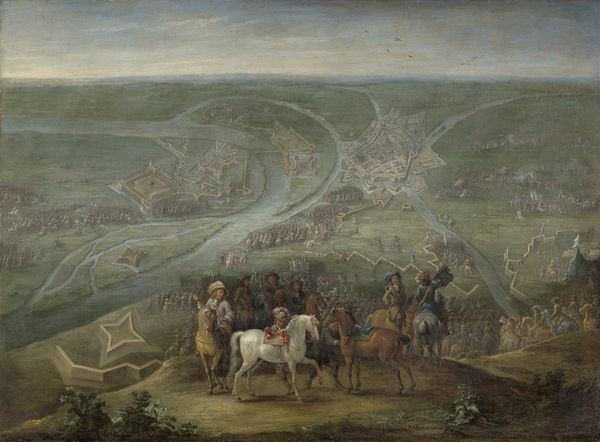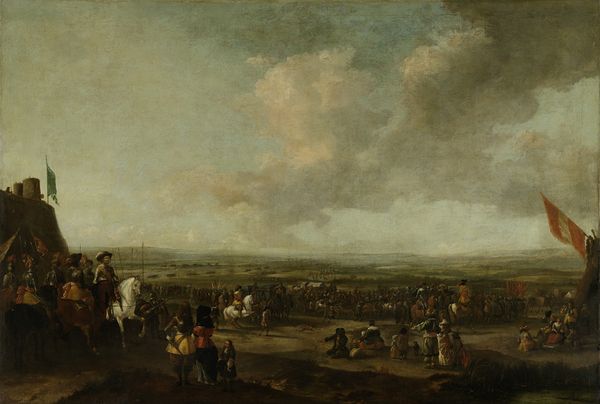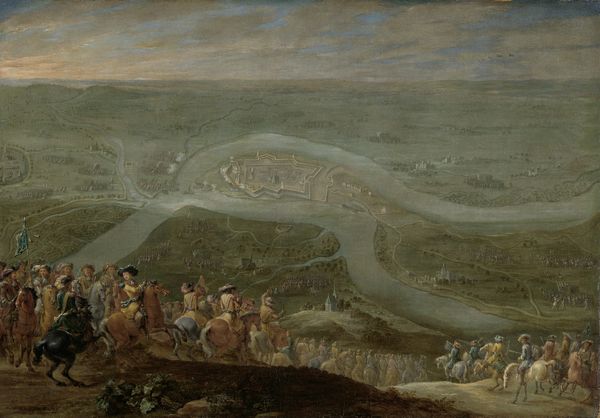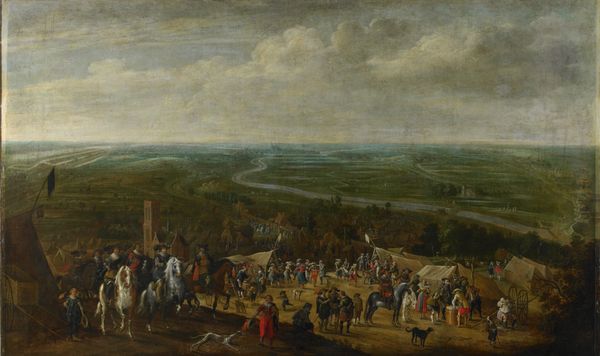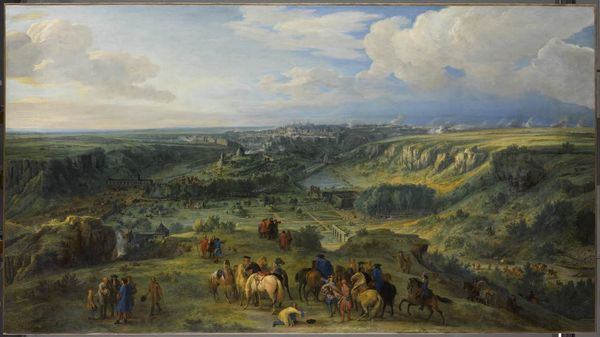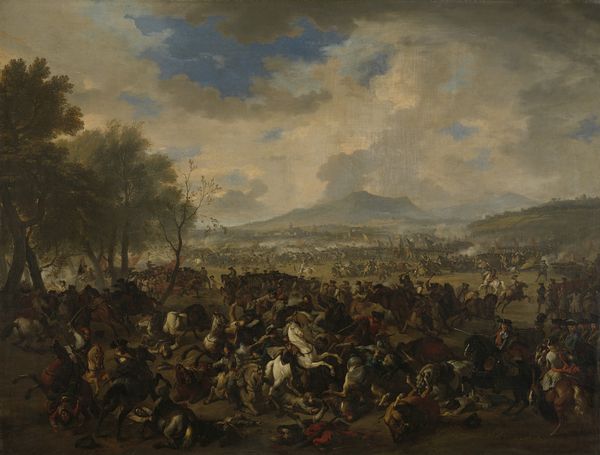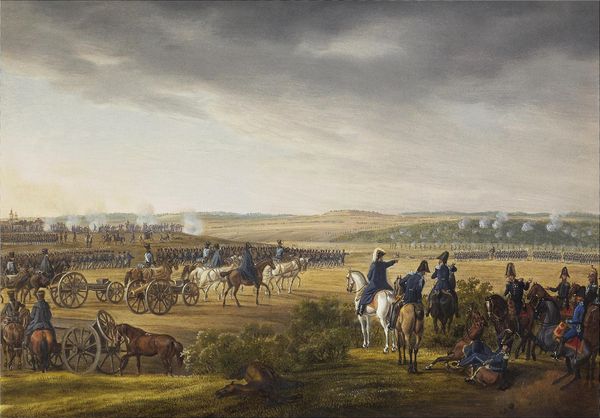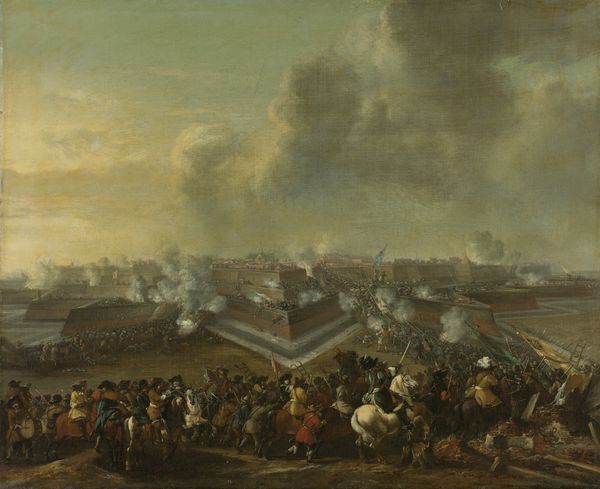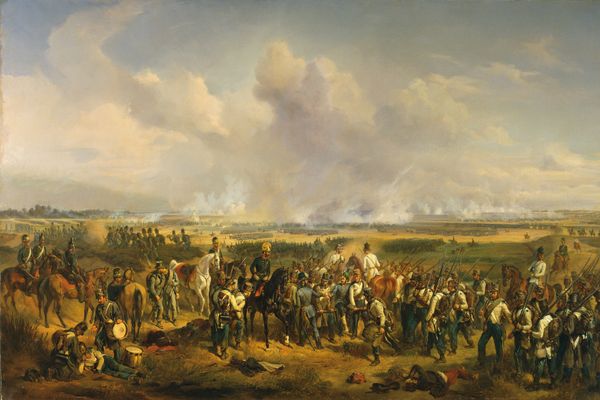
The Defeated Spanish Garrison Leaving 's-Hertogenbosch, 17 September 1629 c. 1630 - 1635
0:00
0:00
oil-paint
#
baroque
#
dutch-golden-age
#
oil-paint
#
landscape
#
oil painting
#
history-painting
#
realism
Dimensions: support height 109 cm, support width 173 cm
Copyright: Rijks Museum: Open Domain
Curator: Up next, we have Pauwels van Hillegaert's, "The Defeated Spanish Garrison Leaving 's-Hertogenbosch, 17 September 1629," painted circa 1630 to 1635. Editor: What immediately strikes me is the subdued palette. Despite the historical weight of the event, the tones are muted, creating a somber atmosphere, wouldn’t you agree? The artist masterfully plays with recession and perspective... Curator: Indeed. It's important to remember that history paintings of this era served a very specific purpose. Hillegaert’s piece is not merely a neutral depiction, but a calculated presentation of Dutch triumph during the Eighty Years' War. Consider the very public nature of this withdrawal as an illustration of that function, and how this capture consolidated power for the Dutch Republic. Editor: Certainly. The panoramic view also contributes to the overall narrative. Notice how the vast landscape dwarfs the departing garrison, emphasizing the scale of Dutch victory. The high horizon line really drives the weight onto the procession. And what is remarkable about this piece is Hillegaert's capturing of a historical subject through an early Realist style that doesn't attempt to inject an idealized heroism into it. The composition seems calculated to emphasize that effect of truth. Curator: Precisely, and let us not overlook the context of its display. Where would such a piece hang? How would its presence contribute to national identity and collective memory in the Dutch Republic? Who was the painting for, if not for posterity, for citizens of this new nation? Editor: It’s a clever study of line and form that quietly directs our attention, don’t you think? Curator: Without question. By delving into the political implications of Hillegaert’s artistic choices, we see how a painting of a historical event such as this transcends simple documentation to become an active participant in shaping perceptions of power, nationalism, and remembrance. Editor: Very insightful. Ultimately, what this exercise emphasizes is how art—even seemingly objective historical representation—remains intertwined with its moment, as much with visual language as it is social conditions. Curator: And that critical intersection keeps these artworks and our interpretations eternally dynamic.
Comments
No comments
Be the first to comment and join the conversation on the ultimate creative platform.
